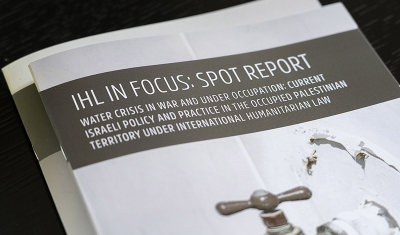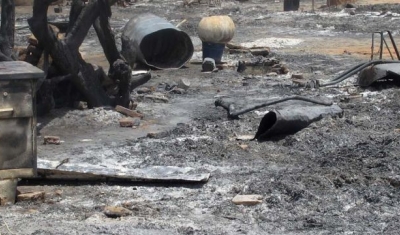RULAC: Armed Violence in Kachin, Shan and Rakhine States Amounts to Non-International Armed Conflicts


Geneva Academy
22 November 2018
Our Rule of Law in Armed Conflicts (RULAC) online portal provides a detailed analysis and legal classification of the multiple non-international armed conflicts (NIACs) that are taking place in Myanmar between the Myanmar Armed Forces (Tatmadaw) and several Ethnic Armed Organizations (EAOs), as well as between various EAOs.
Visitors can discover an overview of these conflicts, recent developments, the factual and methodological basis for their classification as NIACs, parties to these conflicts, and the applicable international law.
‘EAOs are armed non-state actors affiliated to ethnic groups. They are the military wings of political movements that seek autonomy and recognition of their right notably in Kachin, Shan, and Rakhine states’ underlines Dr Chiara Redaelli, Research Fellow at the Geneva Academy.
Criteria to Classify Situations of Armed Violence in Myanmar as NIACs
The RULAC database is unique in the world in that it legally classifies situations of armed violence that amount to an armed conflict – international or non-international – under international humanitarian law (IHL).
‘This is crucial because IHL applies only in armed conflicts. Before humanitarian players, civil servants or academics can invoke IHL or analyze whether IHL was violated, they must know whether it applies. Outside armed conflicts, only international human rights law applies’ underlines Marco Sassòli, Director of the Geneva Academy.
‘We use the following two criteria to assess whether a situation of armed violence amounts to a NIAC under IHL: on one hand, the level of armed violence must reach a certain degree of intensity that goes beyond internal disturbances and tensions, and, on the other at least one side to the conflict must be a non-state armed group that exhibits a certain level of organization’ explains Dr Chiara Redaelli.
A Multitude of NIACs between the Myanmar Armed Forces and EAOs
The Myanmar entry on RULAC provides a detailed analysis of the intensity of armed violence and EAOs’ level of organization in Kachin, Shan and Rakhine states, including recent developments.
‘On that basis, we concludes that the Myanmar Armed Forces are involved in a multitude of NIACs in these three states, notably against the Kachin Independence Army (KIA), the Ta’ang National Liberation Army (TNLA), the Shan State Army-South (SSA-S), the Shan State Progressive Party/Shan State Army-North (SSPP/SSA-N), and the Arakan Rohingya Salvation Army (ARSA)’ underlines Dr Chiara Redaelli.
At Least one NIAC among EAOs
Besides these NIACs, RULAC also concludes that a parallel NIAC is taking place between the Shan State Army-South (SSA-S) and the Ta’ang National Liberation Army (TNLA) in Kachin and Shan states.
About RULAC
Initiated in 2007, RULAC is an online portal that systematically qualifies situations of armed violence using the definition of armed conflict under IHL. While RULAC is still under development and new entries continue to be regularly added, it currently monitors more than 26 armed conflicts involving at least 39 states that visitors can discover either by browsing the map or by browsing conflicts by type or region.








